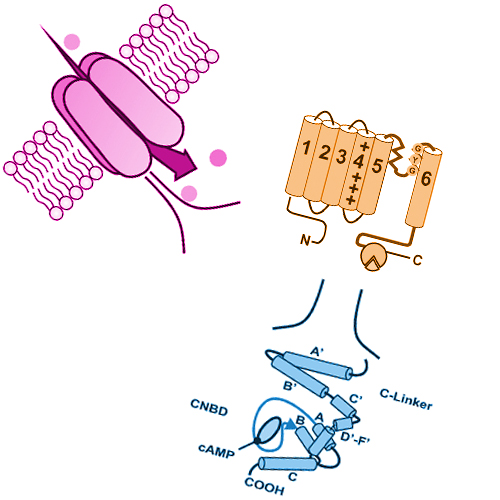Cellular and Molecular Life Sciences,
2009,
66, 3, 470 - 94 published on 01.02.2009
Cellular and Molecular Life Sciences,
online article
Hyperpolarization-activated and cyclic nucleotide-gated (HCN) channels belong to the superfamily of voltage-gated pore loop channels. HCN channels are unique among vertebrate voltage-gated ion channels, in that they have a reverse voltage-dependence that leads to activation upon hyperpolarization. In addition, voltage-dependent opening of these channels is directly regulated by the binding of cAMP. HCN channels are encoded by four genes (HCN1-4) and are widely expressed throughout the heart and the central nervous system. The current flowing through HCN channels, designated Ih or If, plays a key role in the control of cardiac and neuronal rhythmicity (“pacemaker current”). In addition, Ih contributes to several other neuronal processes, including determination of resting membrane potential, dendritic integration and synaptic transmission. In this review we give an overview on structure, function and regulation of HCN channels. Particular emphasis will be laid on the complex roles of these channels for neuronal function and cardiac rhythmicity.









